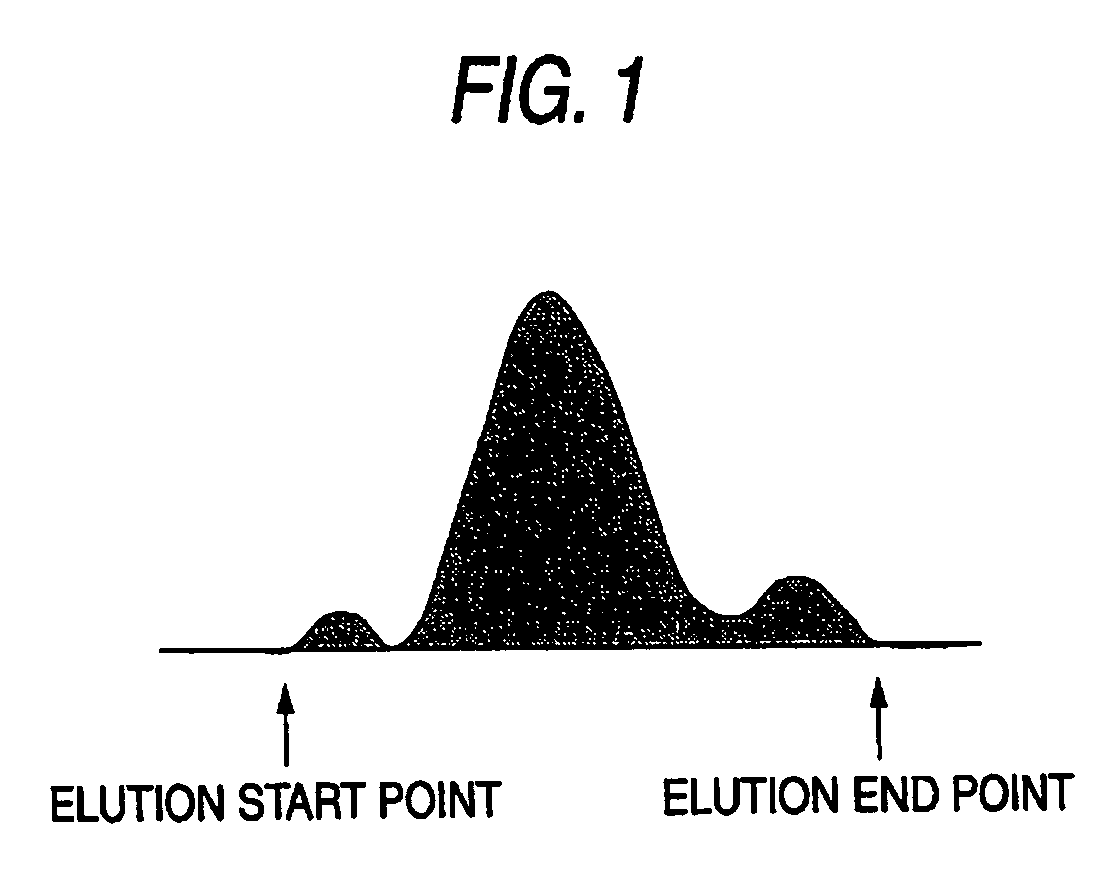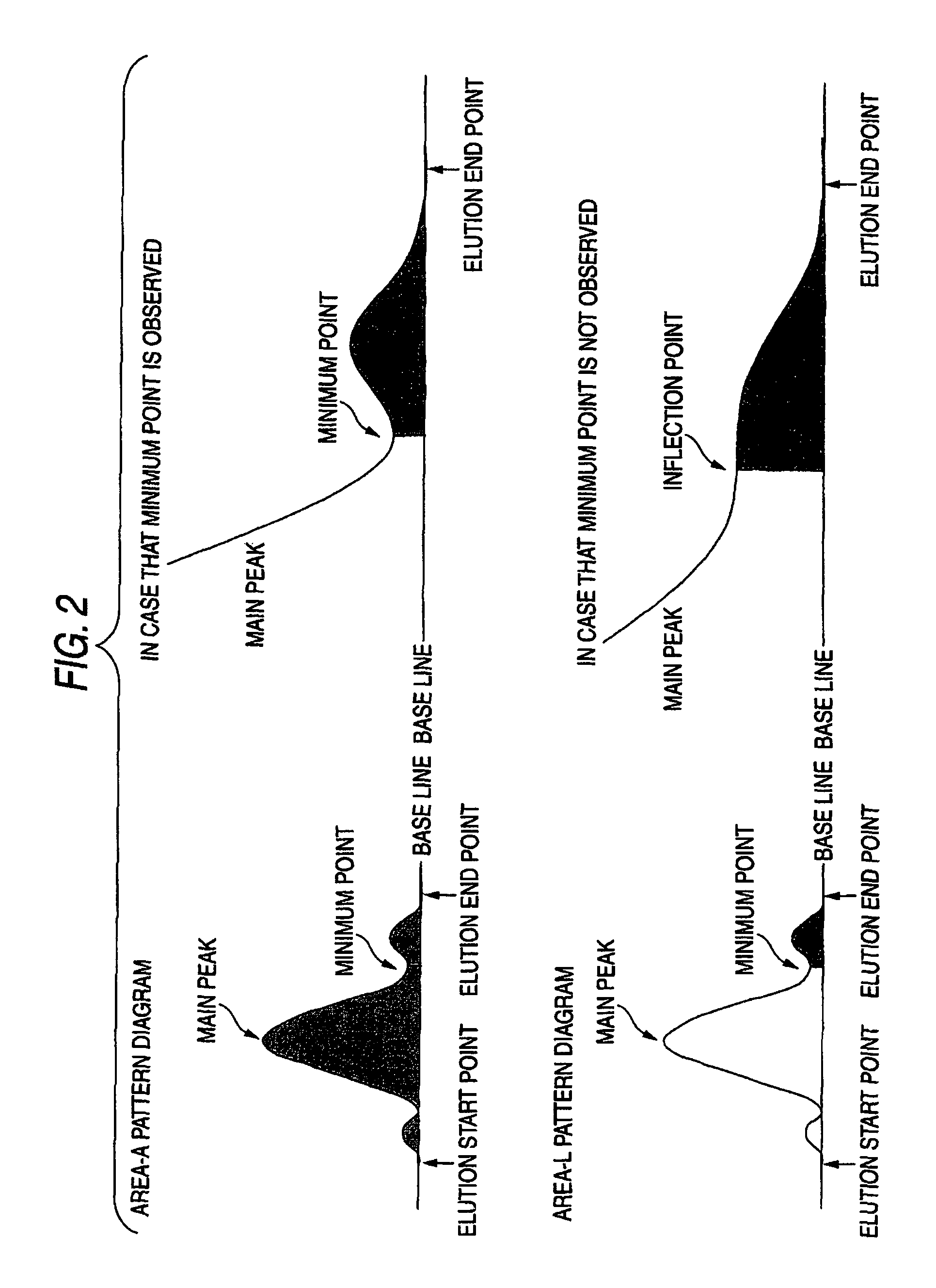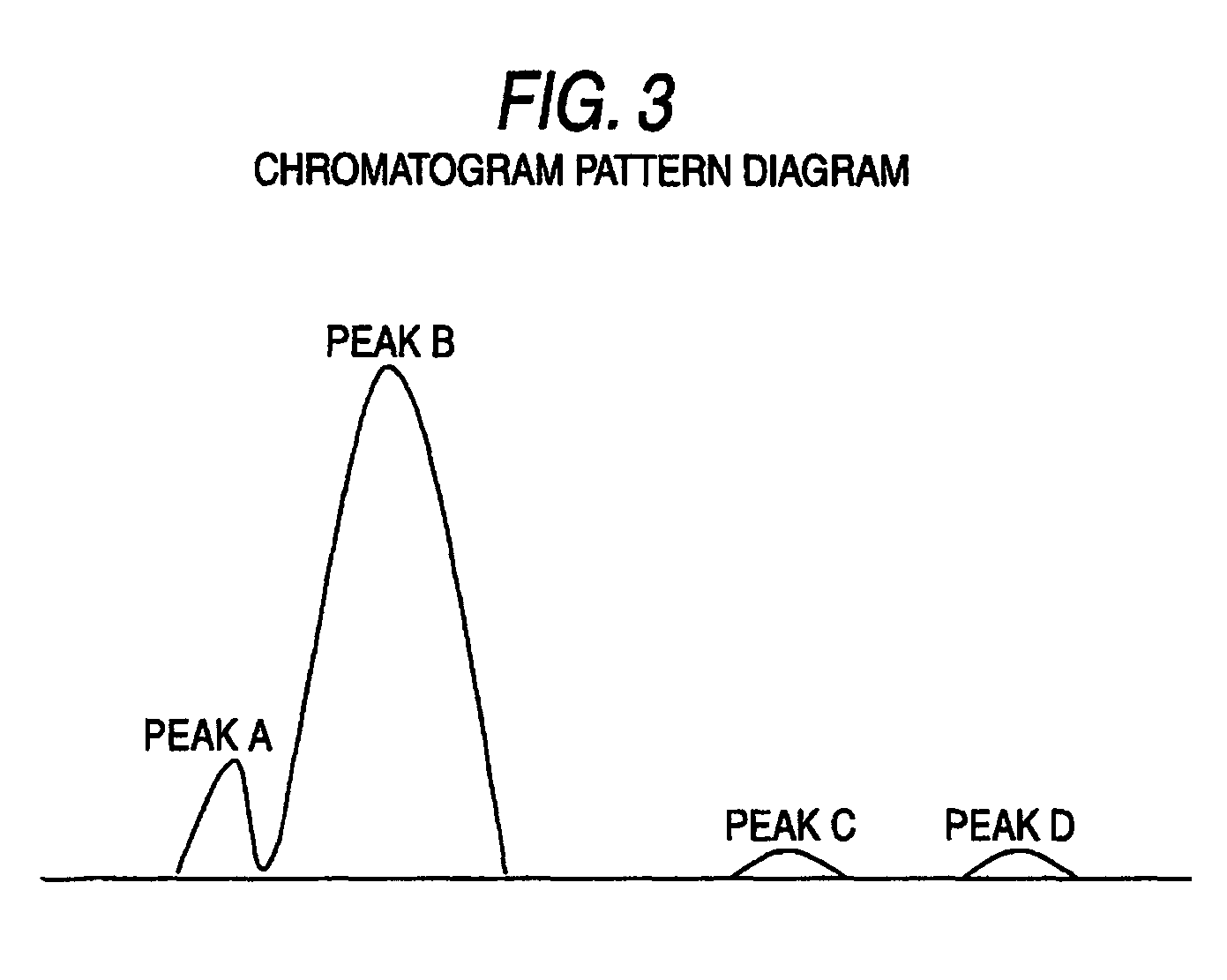Polyalkylene glycol derivative and modified bio-related substance
a technology of polyethylene glycol and bio-related substances, which is applied in the direction of synthetic polymer active ingredients, organic chemistry, chemistry apparatus and processes, etc., can solve the problems of insufficient own function and efficacy, difficult to obtain sufficient pharmacological effect, and few reactive functional groups that can be used for the modification of polyethylene glycol, etc., to achieve high stability
- Summary
- Abstract
- Description
- Claims
- Application Information
AI Technical Summary
Benefits of technology
Problems solved by technology
Method used
Image
Examples
example 1
Synthesis of Compound (p)
Synthesis of R=Methyl Group, A2O=Oxyethylene Group, m=223, and m=475
example 1-1
[0191]To a 1000 ml round-bottom flask fitted with a thermometer, a nitrogen-introducing tube, and a stirrer were added 132.2 g (1.0 mol) of 2,2-dimethyl-1,3-dioxolane-4-methanol, 202.5 g (1.05 mol) of a 28% methanol solution of sodium methoxide, and 600 ml of toluene. With introducing nitrogen thereinto, the toluene was refluxed under reduced pressure for 1 hour to remove the methanol by distillation. With maintaining the solution at 80° C., 126.6 g (1.0 mol) of benzyl chloride was added dropwise over a period of 2 hours using a dropping funnel, followed by further 2 hours of reaction. After completion of the reaction, the temperature was lowered to 60° C. and 10 g of KYOWAAD 600 was added thereto, followed by 1 hour of stirring. The reaction liquid was filtrated, the solvent was removed, and the residue was purified by distillation (b.p. 93-95° C. / 266 Pa) to obtain 4-(benzyloxymethyl)-2,2-dimethyl-1,3-dioxolane.
[0192]1H-NMR (CDCl3, internal standard: TMS) δ (ppm): 1.36, 1.42 (3H, 3...
example 1-2
[0193]To 222 g (1.0 mol) of 4-(benzyloxymethyl)-2,2-dimethyl-1,3-dioxolane was added 350 g of distilled water, and the whole was adjusted to pH 2 with phosphoric acid. With introducing nitrogen thereinto, the solution was heated to 70° C. After 2 hours of reaction, the solution was adjusted to pH 7.0 with sodium hydroxide. After 1 L of chloroform was added thereto and extraction was effected, the resulting chloroform layer was dried over magnesium sulfate and concentrated and the resulting salts were removed by filtrating the condensate to obtain a compound (pa) which was 3-benzyloxy-1,2-propanediol.
[0194]1H-NMR (CDCl3, internal standard: TMS) δ (ppm): 3.50-3.71 (4H, m, CH2OH, CH2O—CH2Ph), 3.86-3.91 (1H, m, CHOH), 4.54 (2H, m, —CH2Ph), 7.27-7.38 (5H, m, —CH2Ph).
PUM
| Property | Measurement | Unit |
|---|---|---|
| temperature | aaaaa | aaaaa |
| temperature | aaaaa | aaaaa |
| reaction time | aaaaa | aaaaa |
Abstract
Description
Claims
Application Information
 Login to View More
Login to View More - R&D
- Intellectual Property
- Life Sciences
- Materials
- Tech Scout
- Unparalleled Data Quality
- Higher Quality Content
- 60% Fewer Hallucinations
Browse by: Latest US Patents, China's latest patents, Technical Efficacy Thesaurus, Application Domain, Technology Topic, Popular Technical Reports.
© 2025 PatSnap. All rights reserved.Legal|Privacy policy|Modern Slavery Act Transparency Statement|Sitemap|About US| Contact US: help@patsnap.com



